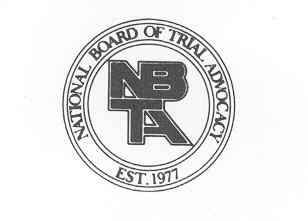Congress recently commissioned the National Academies to make a searching examination of the state of forensic science in the Courtroom in America. This systemic and detailed examination resulted in a report entitled “Strengthening Forensic Science in the United States: A Path Forward”.
The forensic science community was all ablaze as a result of the condemning report of the National Academy of Sciences. This report was cited in the Supreme Court decision of Melendez-Diaz which I previously reported on in this blog. Just in case you have not heard of the NAS report before, it was characterized as follows:
A congressionally mandated report from the National Research Council finds serious deficiencies in the nation’s forensic science system and calls for major reforms and new research. Mandatory certification programs for forensic scientists are currently lacking, as are strong standards and protocols for analyzing and reporting on evidence. There is also a scarcity of peer-reviewed studies establishing the scientific bases and reliability of many forensic methods.
To say it was a wake-up call to the American judicial system would be an understatement.
A similar move was afoot in the academic world when it came to published research. Alarmed by the lack of transparency as well as being very alarmed by the lack of meaningful reporting in such papers and noting the academic quality in published research as generally declining, the academic world undertook a harsh examination of its own proverbial house. This resulted in the STARD checklist.
The Standards for Reporting of Diagnostic Accuracy (STARD) steering committee searched the literature to identify publications on the appropriate conduct and reporting of diagnostic studies and extracted potential items into an extensive list. Researchers, editors, and members of professional organisations shortened this list during a two-day consensus meeting with the goal of developing a checklist and a generic flow diagram for studies of diagnostic accuracy.

The aim of STARD can be stated as follows:
The aim of the STARD initiative is to improve the accuracy and completeness of reporting of studies of diagnostic accuracy, to allow readers to assess the potential for bias in the study (internal validity) and to evaluate its generalisability (external validity).
The STARD statement consist of a checklist of 25 items and recommends the use of a flow diagram which describe the design of the study and the flow of patients.
What does this have to do with DUI?
It is quite simple. None of the government funded research in the development or the continuation of the NHTSA-approved curriculum meets the academic consensus of STARD. Whether it is the original or subsequent research that supposedly validates the Standardized Field Sobriety Tests (SFST’s), the Drug Recognition Expert (DRE) program, or even MADD’s own statistics in terms of DUI, DUI accidents and/or DUI-related deaths.
In order for any academic research to be both academically and scientifically valid and for these or any published reports to be valid, they must meet the STARD standards. Otherwise these reports are not academically acceptable and by that very definition the conclusions contained within it are not scientifically valid. The raw data on much of the research is not available or has not been kept. It is not a transparent process. There is oftentimes manifest and well-known but undocumented bias by the researchers in favor of a particular conclusion. Yet, this Government-funded research is not only allowed in the Courtroom but oftentimes trumps other peer-reviewed meaningful studies that do meet the STARD standards that stand in opposition of the non-STARD government presentments.
Why in the Courtroom of law in America does true validated science come in last place and this whatever you want to call it pseudo-science wins?

(“In God we trust; all others must bring data.” –W. Edwards Deming, physicist and quality improvement pioneer)
-Justin J. McShane, Esquire, Pennsylvania DUI Attorney
I am the highest rated DUI Attorney in PA as Rated by Avvo.com
You can follow me on Twitter, Facebook or Linkedin

Board Certified Criminal Trial Advocate
By the National Board of Trial Advocacy
A Pennsylvania Supreme Court Approved Agency
James E. Fabbrini says:
More junk science to justify MADD’s position. Further, the more people try to shed light on this, the more MADD pumps $$ into the system to change the rules.
Make one wonder; if MADD & NHTSA are correct with their pseudo-science and non-sense tests, why not subject them to real scientific study?
Great post.
James E. Fabbrini
Chicago DUI Attorney
WindyCityLawFirm.com